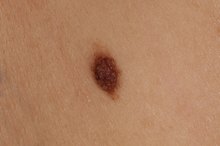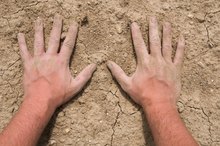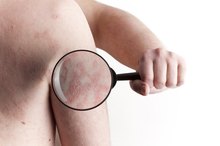What does fact checked mean?
At Healthfully, we strive to deliver objective content that is accurate and up-to-date. Our team periodically reviews articles in order to ensure content quality. The sources cited below consist of evidence from peer-reviewed journals, prominent medical organizations, academic associations, and government data.
The information contained on this site is for informational purposes only, and should not be used as a substitute for the advice of a professional health care provider. Please check with the appropriate physician regarding health questions and concerns. Although we strive to deliver accurate and up-to-date information, no guarantee to that effect is made.
Can You Add Aspirin to Skin Cream?
Acetylsalicylic acid--aspirin--isn’t exactly the same drug as the salicylic acid so commonly used in acne and skin treatments, but both medications have similar effects when used topically. Mixing aspirin into your favorite skin cream may help reduce the redness and inflammation of acne, and the grainy texture of the dissolved aspirin also serves to exfoliate your skin. However, you’ll need to rinse your face after applying an aspirin mask, even if you wouldn’t normally rinse off the skin cream you’ve mixed in with the aspirin, as the aspirin may dry into a flaky mess.
Place four uncoated aspirin tablets in a small bowl. Wet your fingers, and sprinkle a few drops of water on the aspirin. The aspirin starts to dissolve.
How to Use MetroGel for Acne
Learn More
Rub the dissolving aspirin with your fingers to create a thick, grainy paste. If necessary, sprinkle a few more drops of water on the aspirin to further dissolve it.
Use a tongue depressor to thoroughly mix 2 tbsp. of skin cream into the aspirin paste 2. You can add up to 1 tbsp. of lukewarm water, if necessary, to thin the texture of the cream-paste mixture.
How to Make Your Own Strong Skin Peel at Home
Learn More
Apply the aspirin-cream mixture to your face, per the skin cream’s usual directions, using caution to avoid contact with the eyes, nose and mouth. Leave in place for up to 15 minutes, and then rinse with lukewarm water.
Tips
If you tolerate the aspirin mask well, you can use up to six to eight tablets of aspirin total, instead of the four you started with.
Warnings
If you're allergic to aspirin, don't add it to your skin cream. If you're not sure whether or not you're allergic to aspirin, apply a dab of the aspirin paste to the skin of your arm, cover it with a small bandage, and check for signs of skin irritation after 24 hours.
Related Articles
References
- MedlinePlus: Aspirin
- BellaSugar: Recession-Proof Beauty: The Aspirin Mask
- Aspirin. US National Library of Medicine. February 2018.
- Aspirin and your heart: Many questions, some answers. Harvard Medical School. May 2018.
- Aspirin Therapy in Heart Disease. Cleveland Clinic. April 2019.
- Reye Syndrome. American Academy of Family Physicians. February 2018.
- Aspirin for Reducing Your Risk of Heart Attack and Stroke: Know the Facts. US Food & Drug Administration. December 2019.
- AcetaZOLAMIDE For Injection, USP 500 mg - FDA. US Food & Drug Administration.
- Highlights Of Prescribing Information:Depakote. US Food & Drug Administration.
- Could nasal polyps be the cause of your stuffy nose?. Johns Hopkins Medicine.
- Pain Relievers: Understanding Your OTC Options. American Academy of Family Physicians. July 2019.
- Aspirin. MedlinePlus.
- Arthritis Today Drug Guide. Arthritis Foundation.
Writer Bio
Lisa Maloney is a travel and outdoors writer based in Anchorage, Alaska. She's written four outdoors and travel guidebooks, including the award-winning "Moon Alaska," and regularly contributes to local and national publications. She also has a background in personal training, with more than 6,000 hours of hands-on experience.









